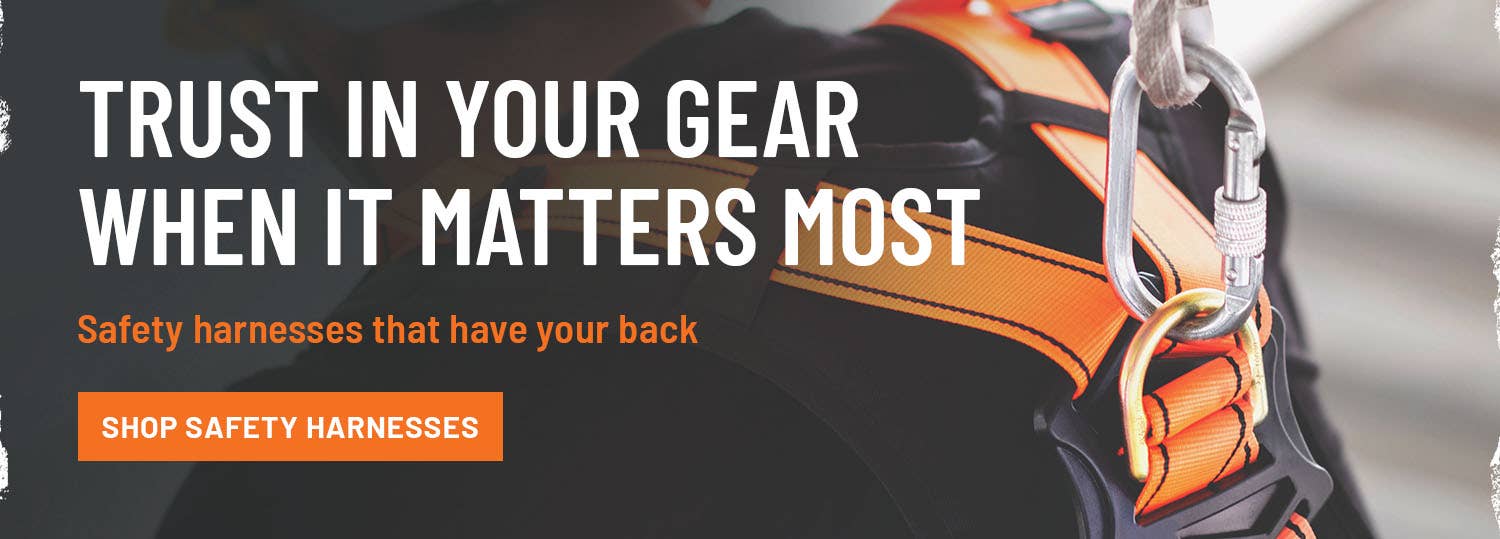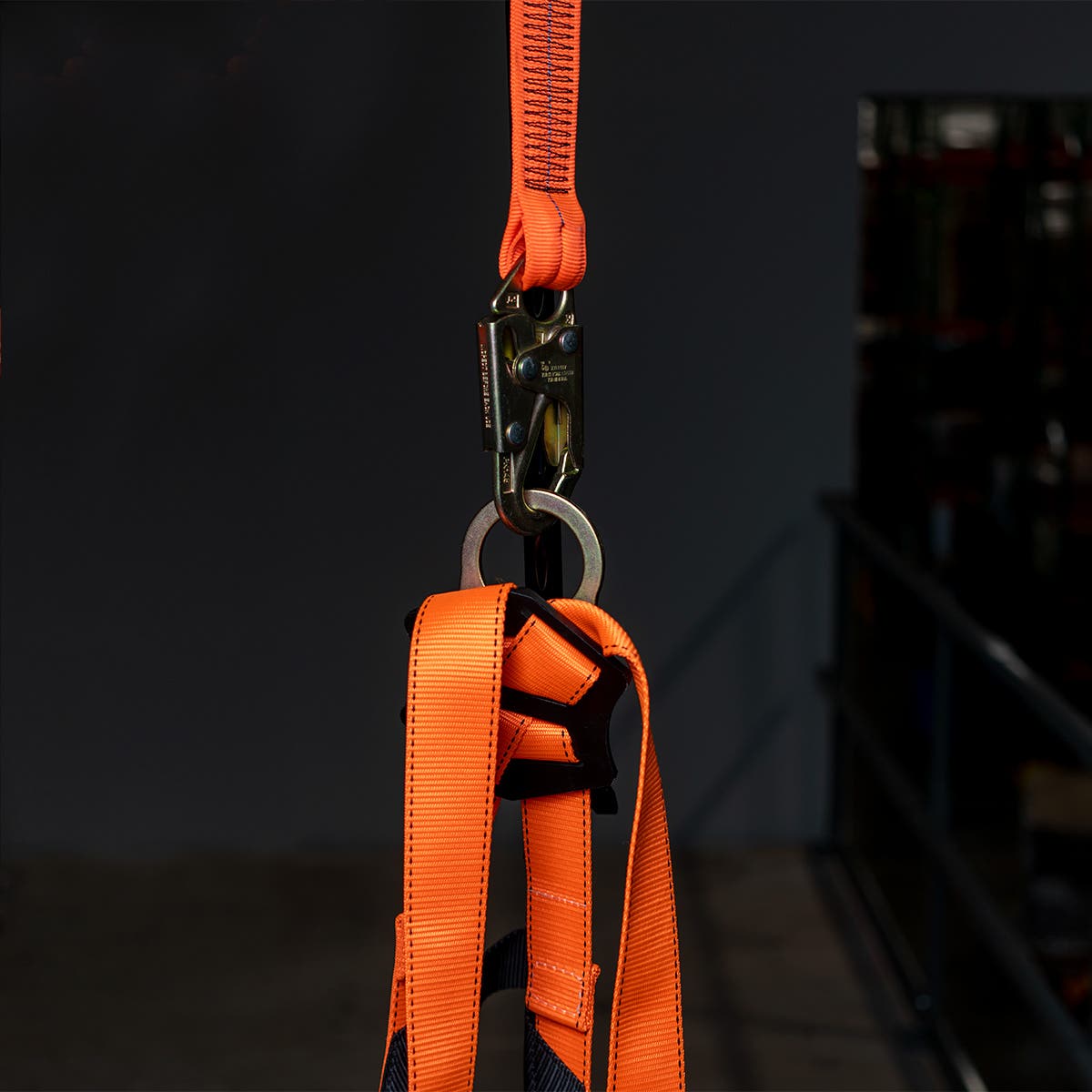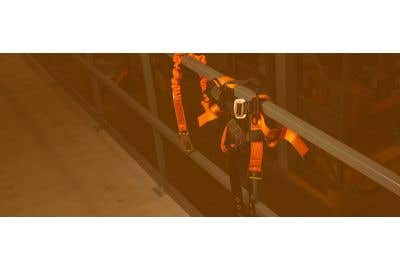*Disclaimer*
The information contained on this page is for promotional and informational purposes only. All equipment should be used by trained professional tradesmen who have been trained how to use the equipment described on this page, and understand the risks of their work. PowerPak assumes no responsibility for errors or omissions in the use or misuse of any product purchased. In no event shall PowerPak be liable for any direct, special, indirect, consequential, or incidental damages or any damages whatsoever, whether in an action of contract, negligence or other torts, arising out of or in connection with the use of this information or the contents of this page. PowerPak reserves the right to make additions, deletions, or modifications to the contents on this page at any time without prior notice.
Year after year, fall protection ends up on OSHA’s top 10 Most Frequently Cited Standards. Most years, it's number one. This is a big topic and has the industry’s full attention. It’s also not a mystery why all eyes are on height safety. People are working at heights all across the country. From 20+ feet off the ground with residential roofing to hundreds of feet off the ground with bridge and building construction.
If those workers aren’t securely tethered in and they fall, it would require a miracle for them to walk away unharmed. The most dangerous misconception is the thought that “they are trained for the work, they aren’t going to fall.”
Everyone falls. It happens. Unless you’re trained to grow wings and fly quickly, no amount of training is going to help you when you are in free fall from a couple of hundred feet up.
But before we get into Fall Protection, you’ve got to understand that fall protection measures are a last resort. Fall Protection only comes into play when your Fall Prevention methods have either failed or were not applicable. Fall prevention systems include railings, passive restraints, and good old fashion "steering clear of fall hazards."
This article discusses what happens when fall prevention fails and a worker goes over the edge. Now it’s time for fall protection to kick in.
Job-Site Considerations for Fall Protection
Saying that fall protection regulations are comprehensive is an understatement. This is a huge topic that is constantly evolving, and due to the number of violations, injuries, and fatalities, it's a topic that has OSHA's full attention.
There are different regulations for different trades/hazards. For example, roofers follow different regulations than workers around holes/excavations. In addition to that, each type of fall protection system has a set of regulations, i.e., lanyards, SRD (self-retracting devices), SRL (self-retracting lifeline), safety nets, etc.
I know, it’s complicated. OSHA acknowledges that this is difficult to navigate and offers a guide to fall protection requirements that helps break the topic down in a more digestible format. Of course, there is significant overlap between standards.


These are some blanket regulations:
- Fall protection is required at heights of 6 feet or higher.
- Use a railing and toeboard or a floor hole cover to guard any floor hole that is a fall risk.
- Provide a guard rail and toeboard around every elevated open-sided platform or floor six feet above the next floor.
- Provide working conditions that are free of known dangers.
- No matter the height, if the fall hazard is near dangerous machines or equipment – such as conveyor belts; guardrails and roe boards must be present.
- Fall protection equipment, such as handrails, safety nets, and stair railings should be used in specific instances.
- Body belts are not considered a fall-arresting device but are allowed as part of a positioning system to prevent falls.
The ultimate blanket rule is one that the OSHA requirements DON'T list out "use your head." Some basic critical thinking and some good decision-making will go a long way. You shouldn't be cutting corners when dealing with fall hazards. If something feels unsafe or not secure, it likely isn’t safe, and it’s worth the little extra time to stop and correct the issue.
Having Proper Fall Protection Equipment
As mentioned at the top, the absolute best way to keep workers safe from fall hazards is to do everything possible to prevent a fall from happening. This requires the use of fall prevention systems like railings and workers to be properly trained. But, even when you do everything right, a fall can still happen, and that’s where fall protection comes in.
The go-to option for fall protection is the Personal Fall Arrest System. PFAS is the category; the specific items include safety harnesses, lanyards, anchors, etc.
If a worker falls, the self-arresting line will stop the fall. The difference between a PFAS and just using some rope or wire is that PFAS is designed to break the fall and absorb the shock, taking on a lot of the force that would otherwise injure a worker. The key to a PFAS isn’t necessarily to stop a fall fast, but instead to stop a fall efficiently. Stopping a fall fast is easy. A noose can stop a fall fast, but a PFAS is designed to slow the worker down and then bring them to a stop, and it needs to do this in as short of a distance as possible.
Every part of this system has its own set of regulations. Single point anchors need to meet specific specifications. The anchor itself and its fastened substrate require a minimum weight rating. Lanyards and SRDs need to meet specifications on how efficiently they can arrest a fall. The safety harness needs a D-ring that meets necessary ratings and has fall arresting features, like a shock absorber.
Confined Space Fall Protection
When you think of fall protection, everyone thinks of workers on the top of a skyscraper, walking across an I-beam. While this is a good example, other workers also require fall protection. Utility workers entering and exiting manholes require a unique fall protection system.
There are a couple risks when entering a manhole, the first risk is the worker misses a rung on the ladder and falls. That’s a standard risk when working around fall hazards. The other risk is that the manhole is full of dangerous gases and as the worker descends, they pass out.
This is a much more serious and unique situation. The worker will fall and be passed out. They are unable to climb back up, and the other workers cannot go into the manhole to rescue them because they also will pass out.
For these types of situations workers will use a tripod or davit system. These systems usually have an SRD built in to arrest a fall and includes a winch to lift an unconscious worker out of the manhole without having to go in after them.
Rescue and Recovery
It doesn’t end there. Let's say a worker goes over the edge, the PFAS works perfectly, and the worker is safely suspended and unharmed. Now what? They are hanging in a harness off the side of a building.
The recovery effort needs to get moving immediately. The worker seems okay for now, but unfortunately, the same equipment that saves workers from fatal falls can also cause injury if the workers are left hanging too long. It only takes about 10 minutes of hanging in a harness before suspension trauma can start to set in. As workers hang for too long, they can eventually pass out, making rescue efforts much more difficult.
Suspension trauma is caused by blood pooling in the legs due to a person being stuck in a vertical position, and the leg muscles are not working to pump the blood back up. It’s highly recommended that workers add trauma relief straps to their harnesses. After a fall, a worker loops the strap below their feet to give them a surface to stand on. This works the leg muscles as well and relieves some of the stress of the harness on the body. Trauma relief straps don't eliminate the threat of suspension trauma, but if used correctly, they can help buy some time.
As a company, planning for a fall recovery is essential. A rescue plan and equipment need to be always readily available.
Learn More About Fall Protection


PowerPak takes fall protection very seriously, and we only offer products we believe in. Our lines of PFAS and fall prevention products are high quality and do not cut corners.
ARRESTA Gold Series and Silver Series fall protection harnesses are two of the premier options of PFAS available on the market today.
ARRESTA’s wearable full-body harnesses are comfortable and strong so that workers can wear them without their movement being constricted. These harnesses are made of high tenacity polyester. They are incredibly durable, keeping workers safe and secure after a fall until they are rescued.
ARRESTA lanyards and shock packs can absorb the shock of a six-foot free fall.
Lanyards are available with small or large hooks and in the dual-hook Y-lanyard configuration. The breaking strength of the webbing is 6,000 pounds, capable of absorbing the energy of the average construction worker.
We offer numerous safety systems and features that will help you remain OSHA compliant while preventing tragedy.
If you need help finding the best fall protection system for your project or site, simply drop us a line!









